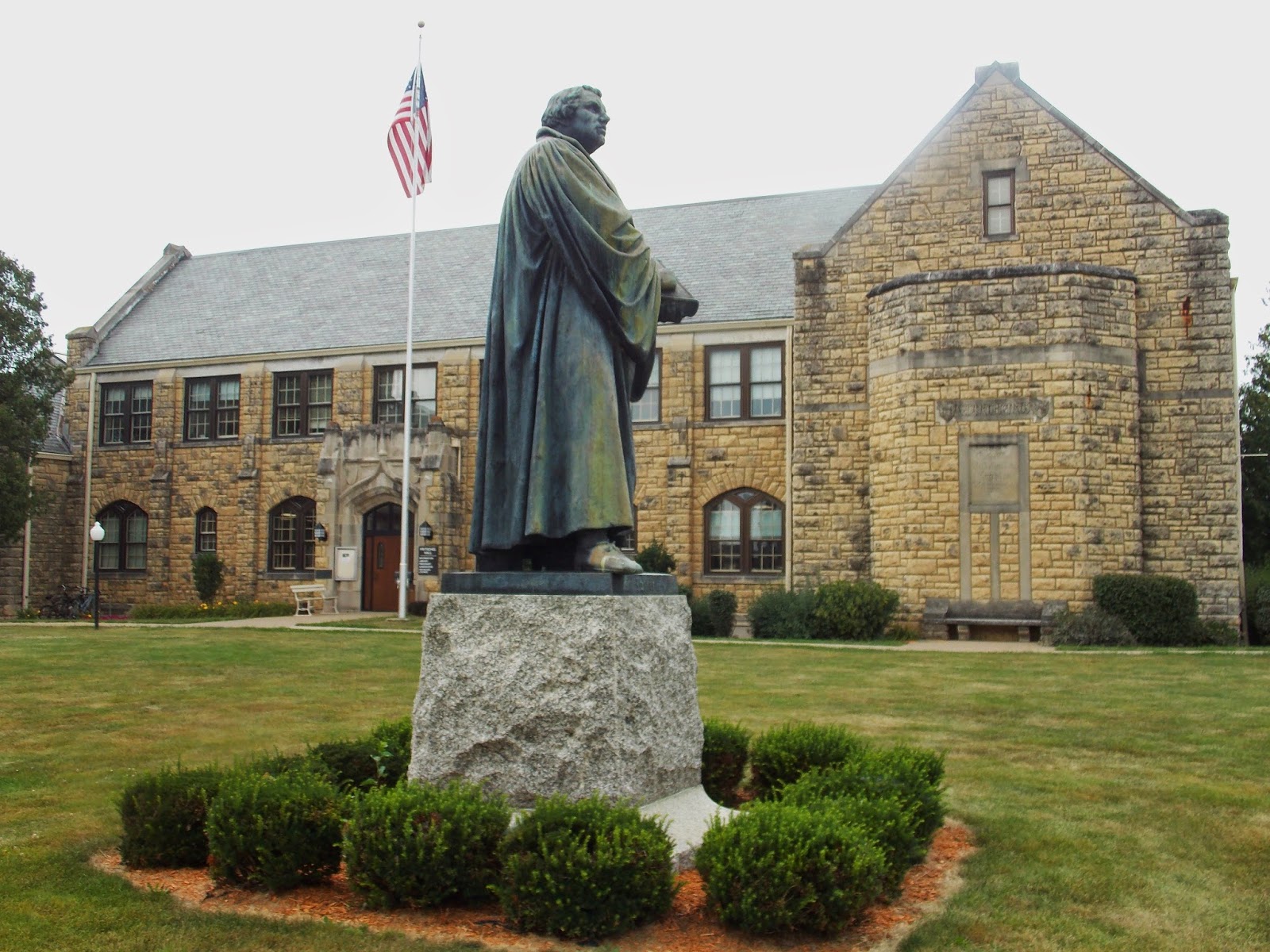After visiting Crystal Lake Cave we drove over to Mines of Spain Recreation Area. This park, which features woodlands and rugged limestone bluffs, is the location of Julian Dubuque's monument. That man was born in 1762 in Canada. When he came to this area of Iowa he was active in trading and mining with the Fox and Sauk Indians. In 1788 Dubuque obtained an official land grant from Spanish Governor Baron de Carondelet in St.Louis which gave him 73,324 acres of land. This land, shown in early 18th century maps as "Lead Mines", became known as "Mines of Spain". His monument is marked by a tall brick tower overlooking the Mississippi River. From that site I took the picture posted below. On the left side of the picture below can be seen the town of Dubuque, which Julien Dubuque founded.
Driving through the park we saw fields of wildflowers. In Dubuque's Museum of Art are some wonderful illustrations by George Olson of prairie grasses and wildflowers. So I can make a safe guess that some of the yellow wildflowers which we saw at Mines of Spain were black-eyed Susans, goldenrod, sawtooth sunflower, compass plant or the grey-headed cone flower- just to name a few of the possibilities!
From Mines of Spain we drove to Wartburg Seminary where our nephew Martin and niece Anne met us to show us around the seminary. We met at Luther's statue which stands in front of the buildings.
On the grounds is a small vineyard. The grapes are starting to ripen and, according to Anne, will be ready for a community grape stomp in another month or so. The grape juice is then made into wine for communion. On Tuesday, our last day in Dubuque, we toured the National Mississippi River Museum and Aquarium. I must say that this river town does have a lot to offer!
Wednesday, August 20, 2014
Subscribe to:
Post Comments (Atom)




No comments:
Post a Comment